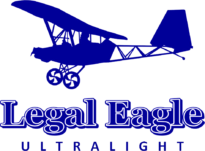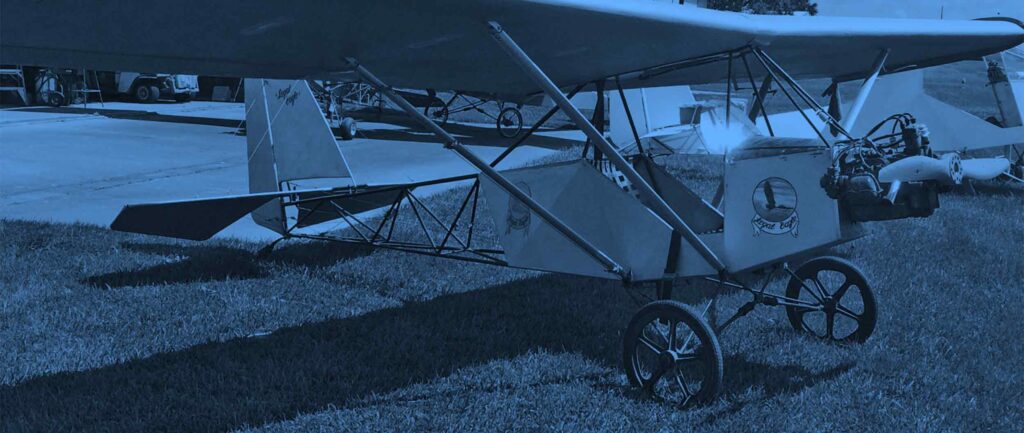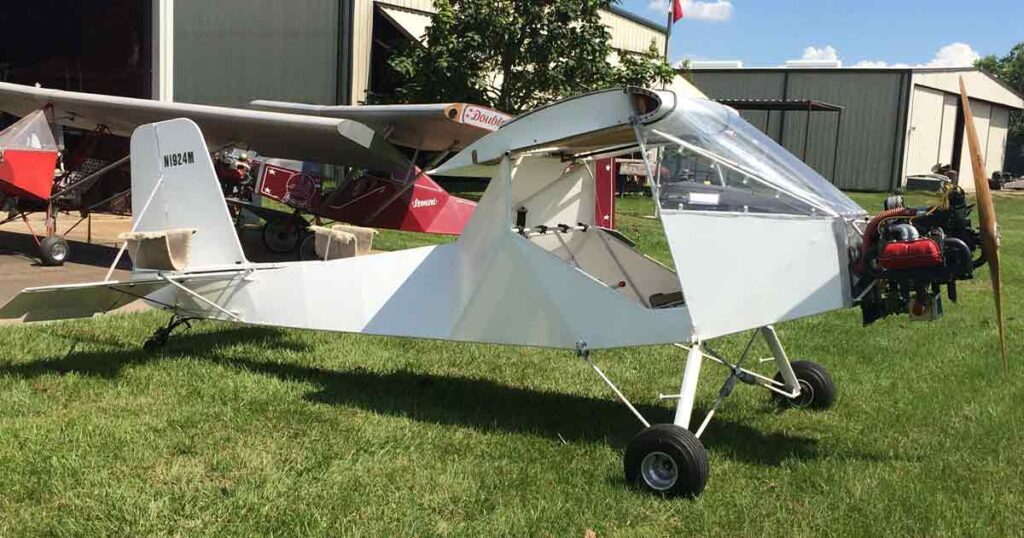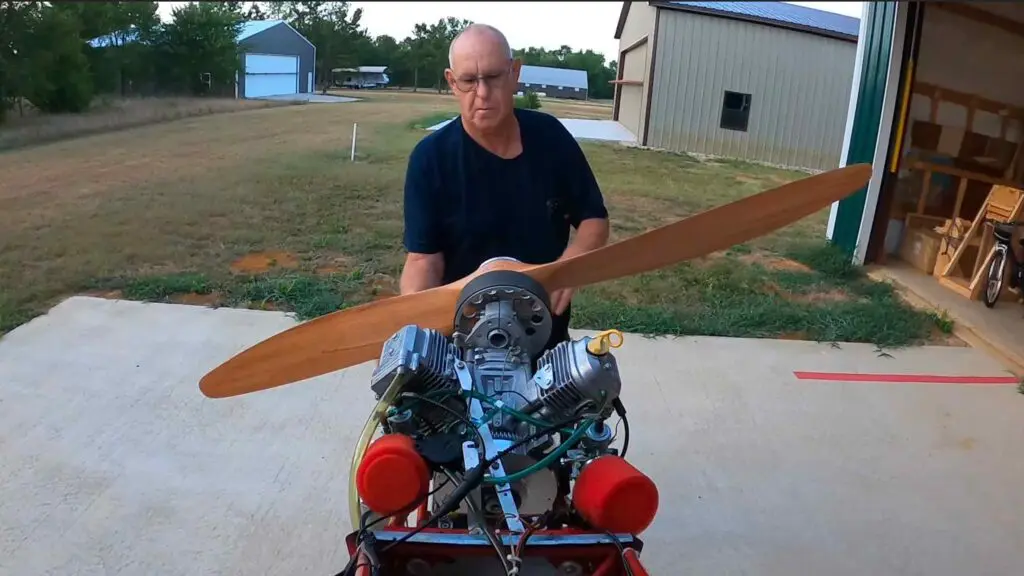Let’s Do a Weight and Balance
You will need to do a weight and balance test on your plane before you fly. This is necessary, so your plane will be in a controllable condition, not nose heavy nor tail heavy. On the Cabin Eagle plans, I have 5 different weight and balance pages. An FFA agent looked them over very closely and just said good.
You will need to run a Weight and Balance on the empty plane. On the Legal Eagle airplane, the empty weight and balance should come out right on the front spar. Now run one on the plane that has a pilot (you) and a full tank of fuel. This would be a gross weight test. Then run one with you and a small amount of fuel. Also, run one with the test pilot if someone else is going to test-fly it for you.
How do you do a weight and balance test? Well, you will need a plum bob and a piece of chalk, and throw in a tape measure. You will need a scale that has the capacity to weigh your plane to weigh your plane. I use a bathroom scale for this.
First, start by leveling your plane.
The level test spots of the Legal Eagle are the backbone on the rear fuselage, and the floor under the seat.
Now that you have the plane level and all the necessary tools, draw a side profile of your fuselage on a tablet and record the measurements and weights.
A place to measure from is called a datum. The datum can be several places on the plane, but for making things easy, let’s use the front of the prop. Drop the plum bob down very close to the floor in front of the prop and make a line on the floor. Also, make a line on the floor at the center line of the main wheels, and while you are at it, make one on the center line of the tail wheel. Now that you have the marks made measure the distance from the prop mark to the main wheels and to the tail wheel. Record all this on your tablet drawing.
Now comes the weighting with the plane level. Weigh the plane at both main wheels and tail wheel and record. The weight times the distance gives you the moments. Also, do this for the main wheels and tail wheel. Now that you have weights and moments for the mains wheels and tail wheel.
Divide the total moments by the total weights to give you the distance to the center of gravity for your plane from the front of the prop. The Center of Gravity range for the Legal Eagle is from 25% to 35 % of the airfoil. The Legal Eagle has a good range of C of G. The fuel tank of the Legal eagle is located in the wing directly on the C of G so not to change the C of G as you use fuel.
There are many ways to do a C of G test, but I think my way is the easiest.
Leonard



